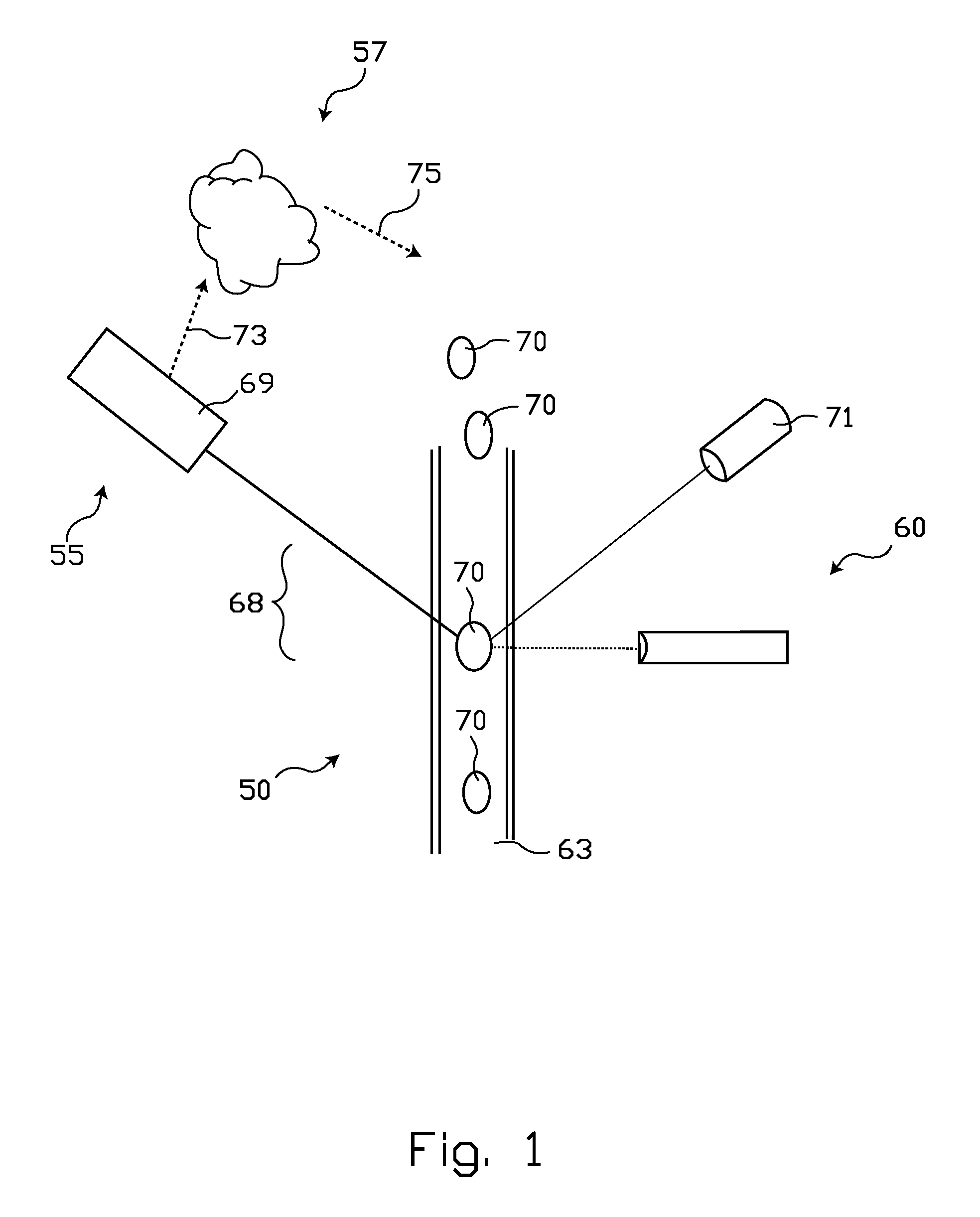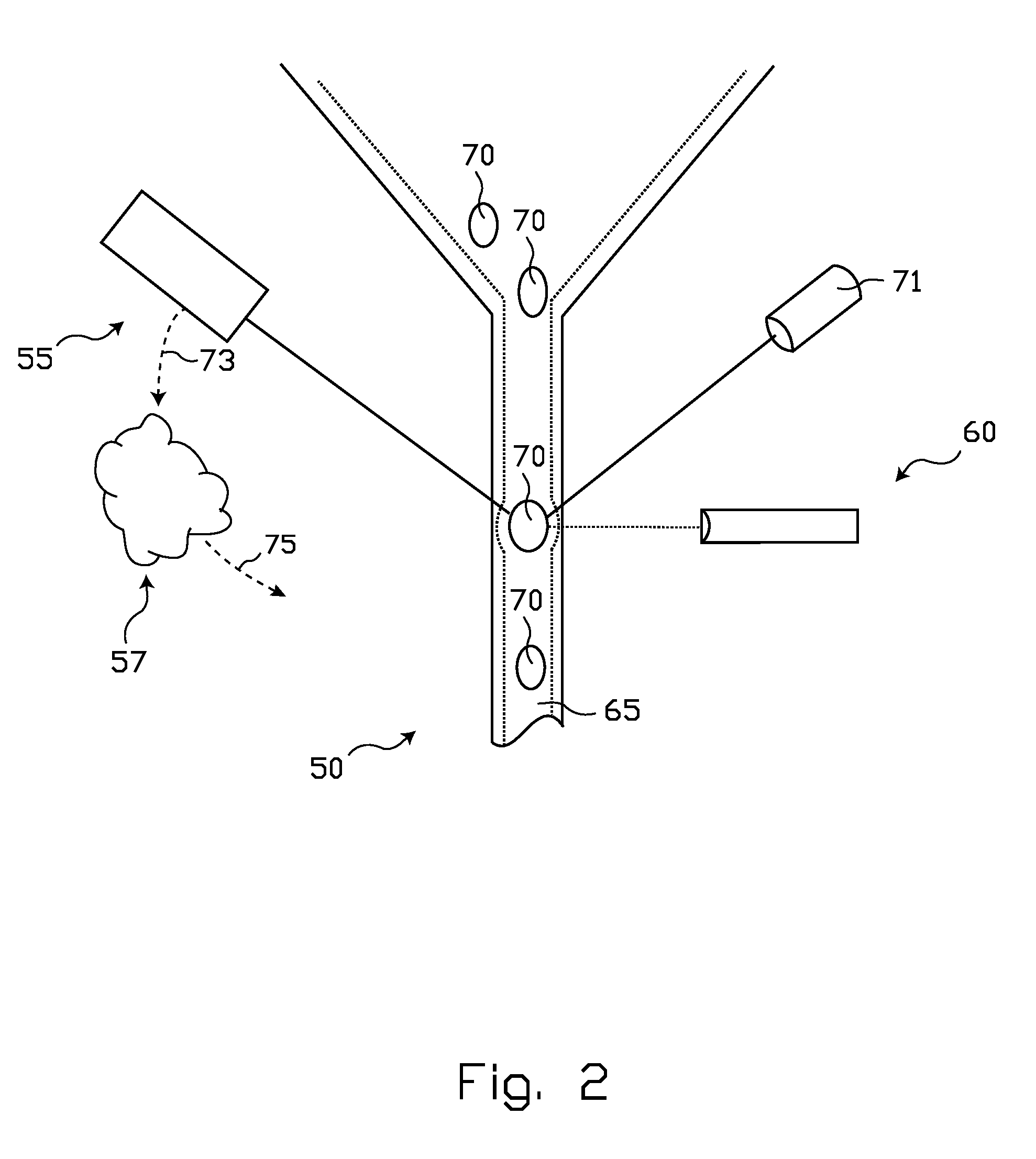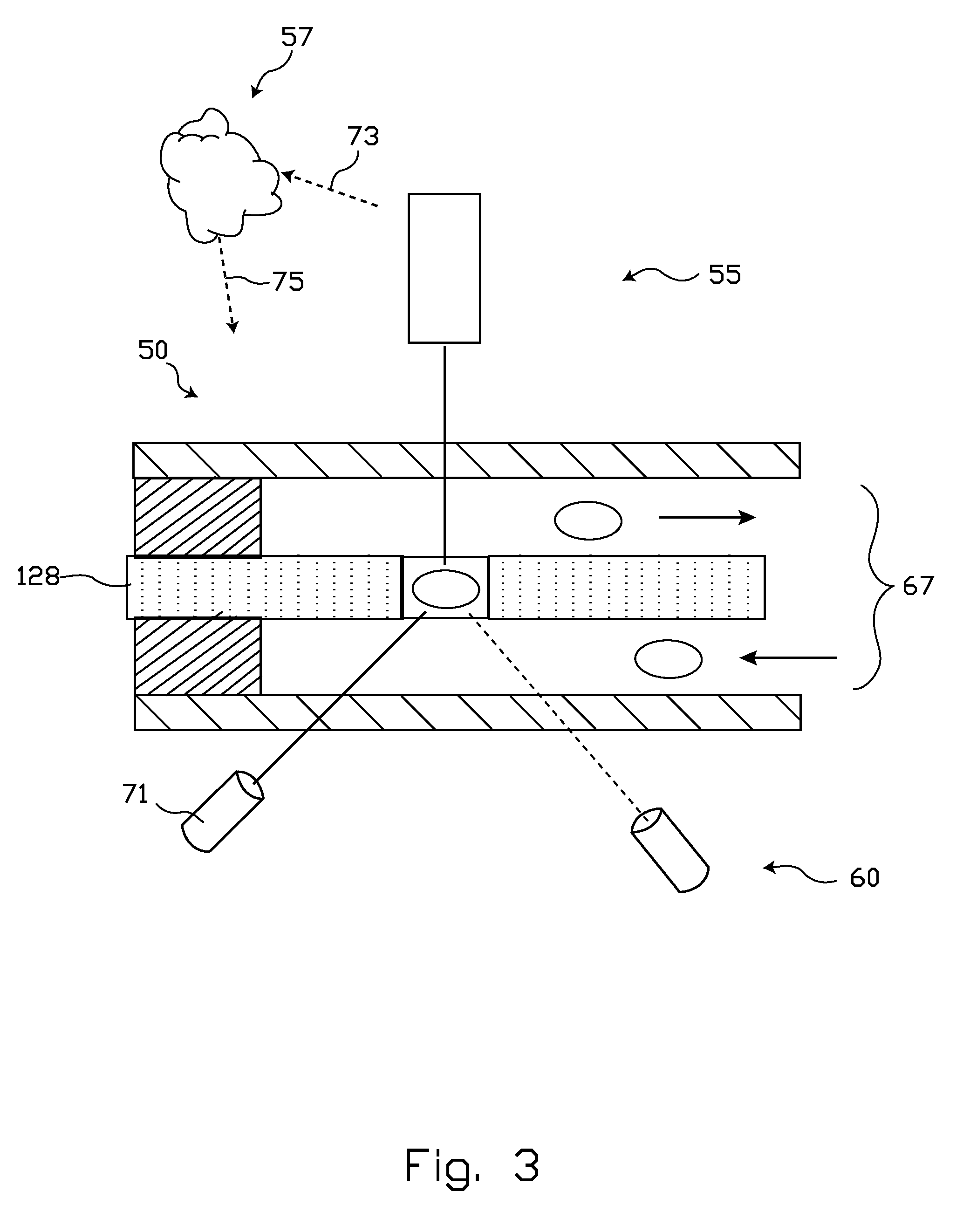Microfluidic cell sorter and method
a microfluidic cell sorter and microfluidic technology, applied in biomass after-treatment, specific use bioreactors/fermenters, biochemistry apparatus and processes, etc., can solve the problems of less flexible and precise than desired, conventional cell sorting devices are complex, bulky, and expensiv
- Summary
- Abstract
- Description
- Claims
- Application Information
AI Technical Summary
Problems solved by technology
Method used
Image
Examples
embodiment 80
[0040]With reference now to FIG. 4, an arrangement of structures illustrating certain principles of operation of the invention is indicated generally at 80. As illustrated, embodiment 80 includes an opaque member, generally indicated at 102, disposed between a radiation source 104 and a radiation detector 106. Opaque member 102 is provided as a portion of structure arranged to cause a desired fluid flow of a fluid sample including biological particles of interest. Sometimes, opaque member 102 may be made reference to as an interrogation layer, because layer 102 is associated with an interrogation zone. At least one orifice 108 is disposed in opaque member 102 to provide a flow path between a first side, generally indicated at 110, and a second side, generally indicated at 112. Orifice 108 may be characterized as having a through-axis 114 along which fluid may flow between the first and second sides 110 and 112 of opaque member 102, respectively.
[0041]The thickness, T1, of an opaque ...
embodiment 240
[0066]Although both of supply chamber 242 and waste chamber 244 are illustrated as being open, it is within contemplation for one or both to be arranged to substantially contain the fluid sample within a plumbing device that includes a multilayer embodiment 240. Also of note, although a top-down fluid flow is illustrated in FIG. 6, fluid flow may be established in either direction through orifice 108. In one reverse-flow configuration, the positions of supply chamber 242 and waste chamber 244 would simply be reversed from their illustrated positions. In an alternative reverse-flow arrangement, the positions of the radiation source 104 and detector 106 would be reversed from their illustrated positions.
[0067]The multilayer plumbing arrangement 240 illustrated in FIGS. 2 and 3 includes a top cap layer 254, a top channel layer 256, an opaque member 102, a bottom channel layer 258, and a bottom cap layer 260. Such layers can be stamped, e.g. die cut, or manufactured by using a laser or ...
PUM
| Property | Measurement | Unit |
|---|---|---|
| thickness | aaaaa | aaaaa |
| thickness | aaaaa | aaaaa |
| thickness | aaaaa | aaaaa |
Abstract
Description
Claims
Application Information
 Login to View More
Login to View More - R&D
- Intellectual Property
- Life Sciences
- Materials
- Tech Scout
- Unparalleled Data Quality
- Higher Quality Content
- 60% Fewer Hallucinations
Browse by: Latest US Patents, China's latest patents, Technical Efficacy Thesaurus, Application Domain, Technology Topic, Popular Technical Reports.
© 2025 PatSnap. All rights reserved.Legal|Privacy policy|Modern Slavery Act Transparency Statement|Sitemap|About US| Contact US: help@patsnap.com



